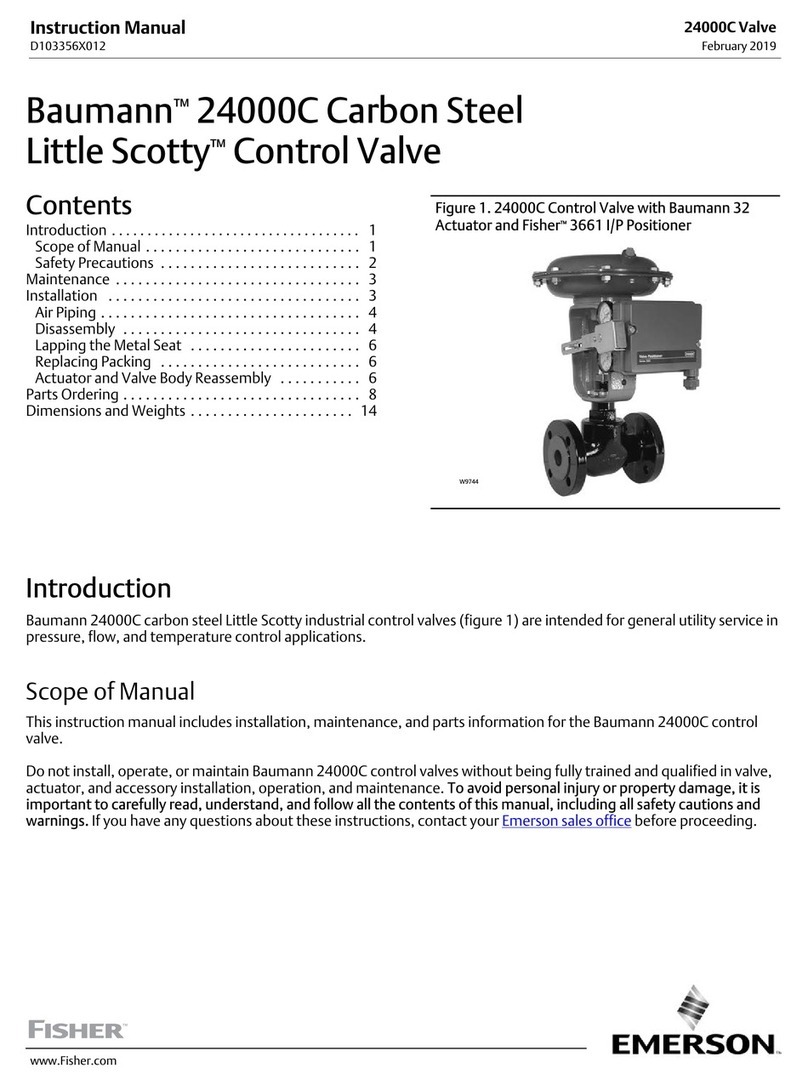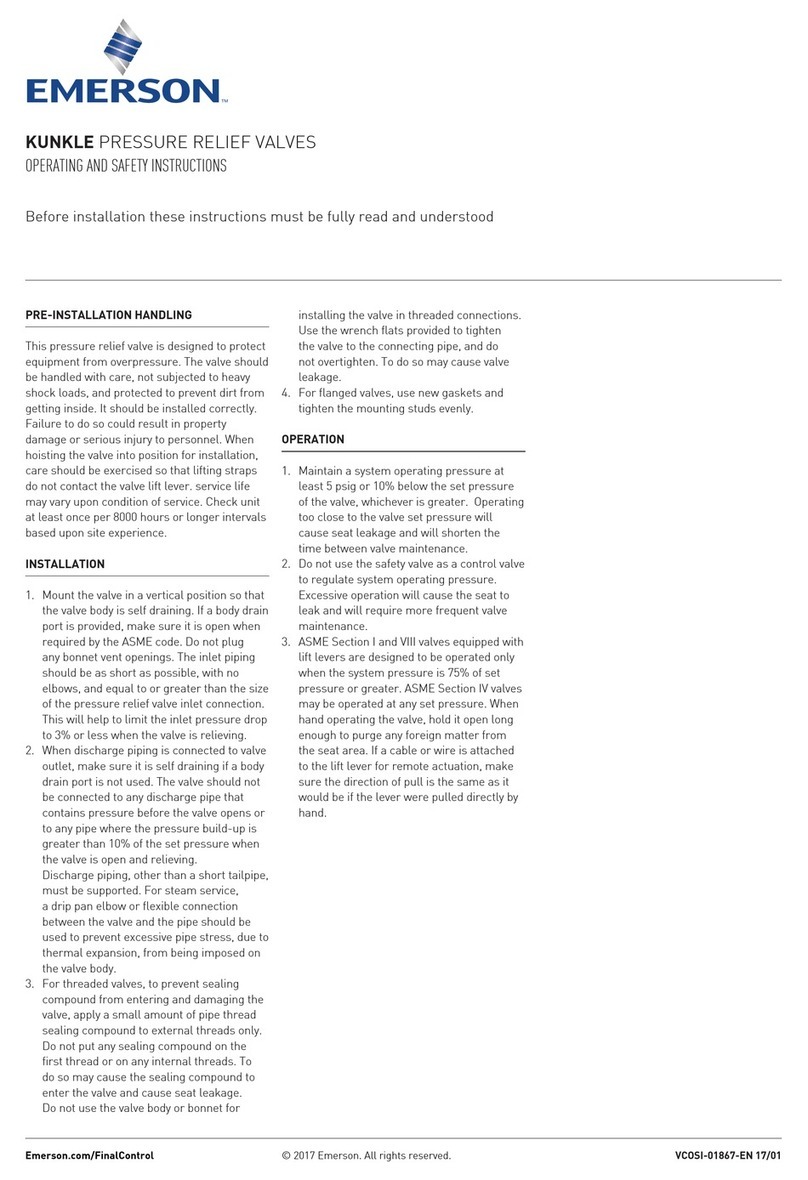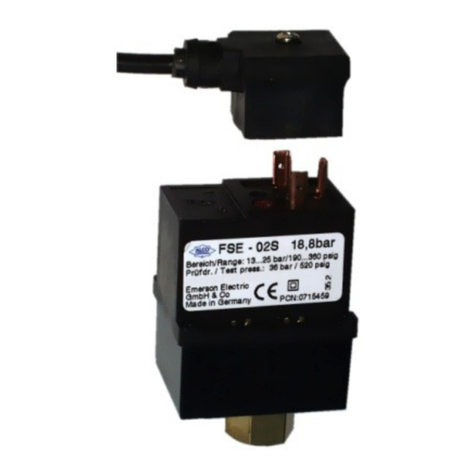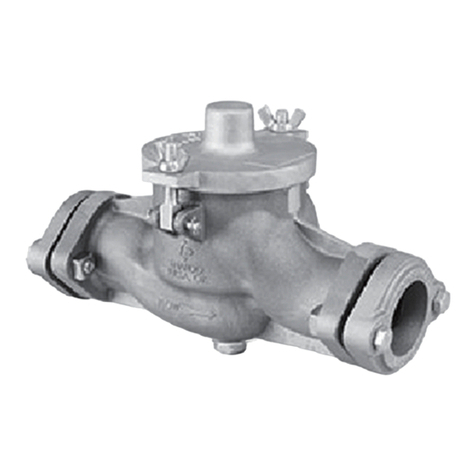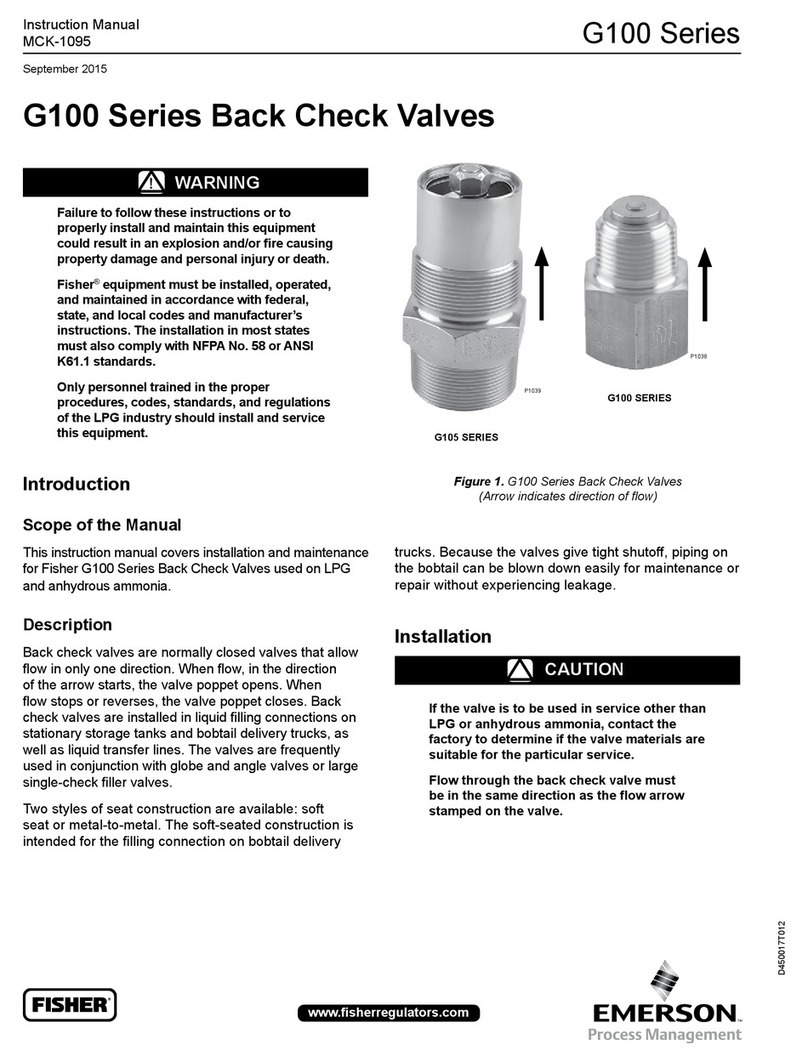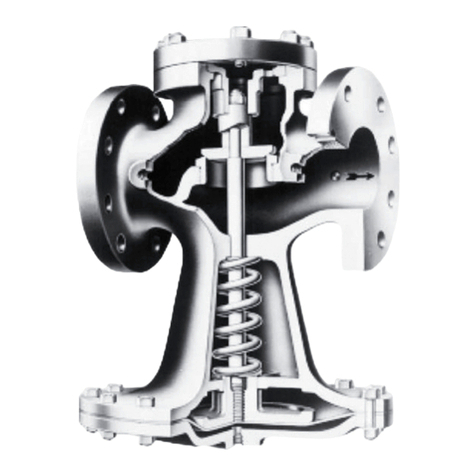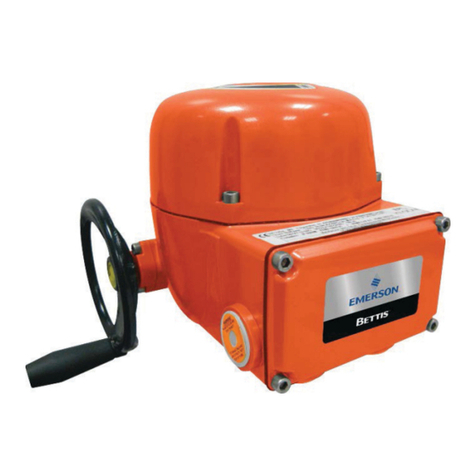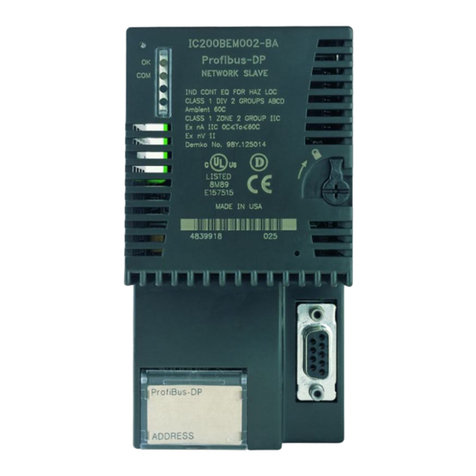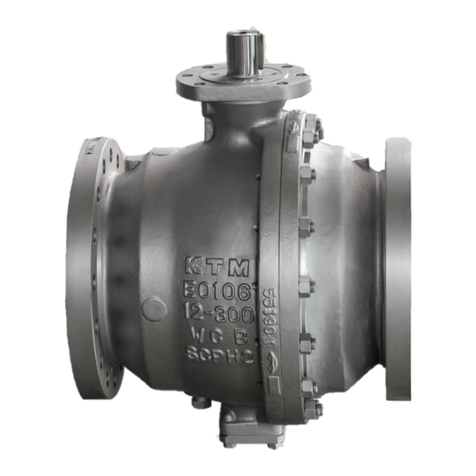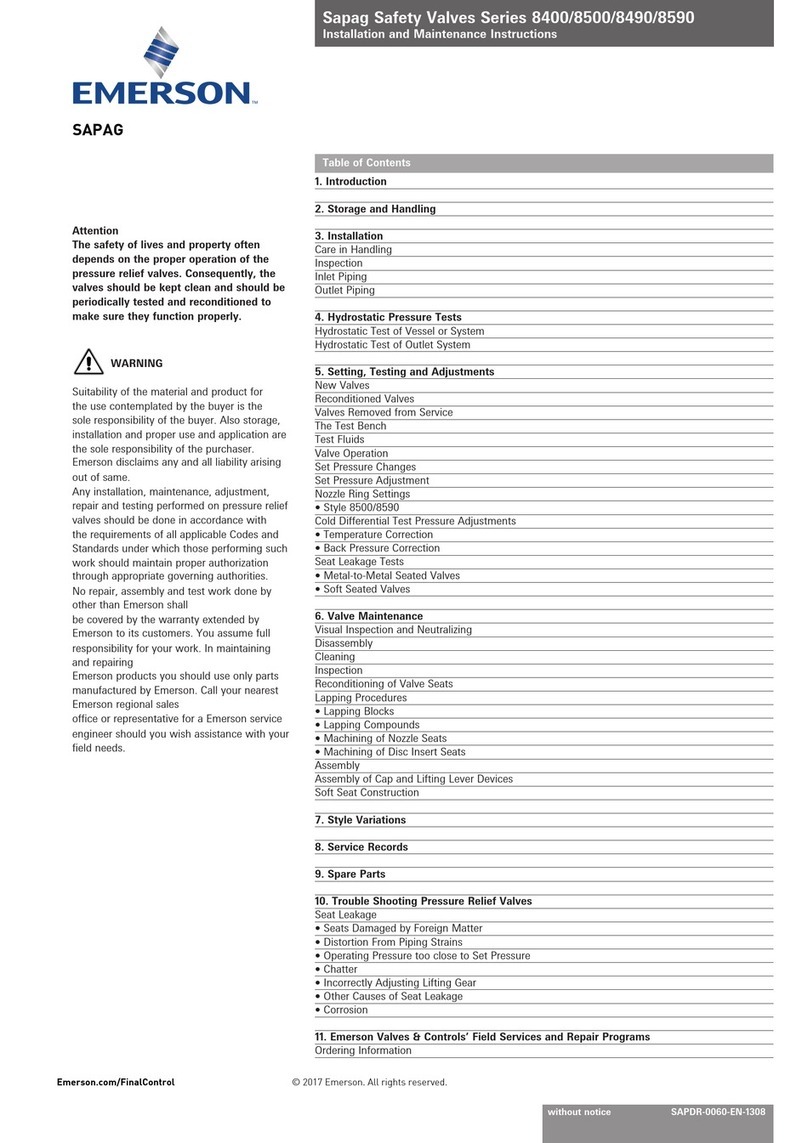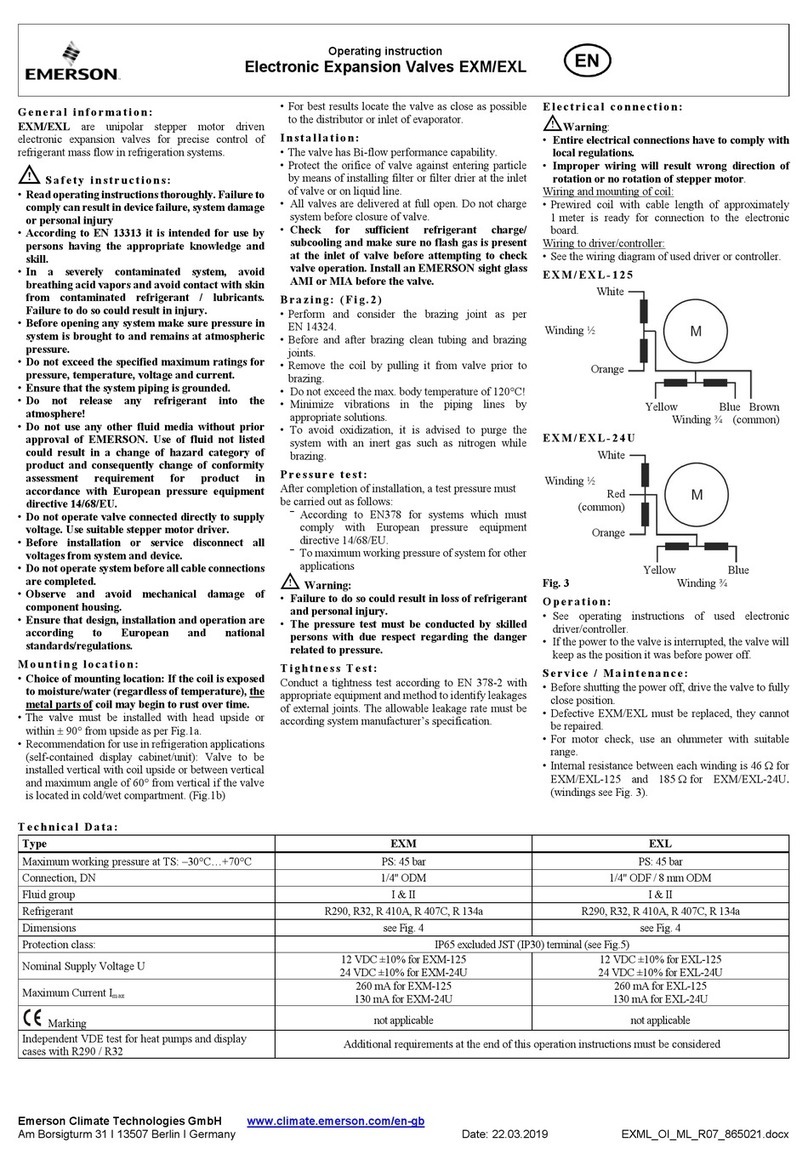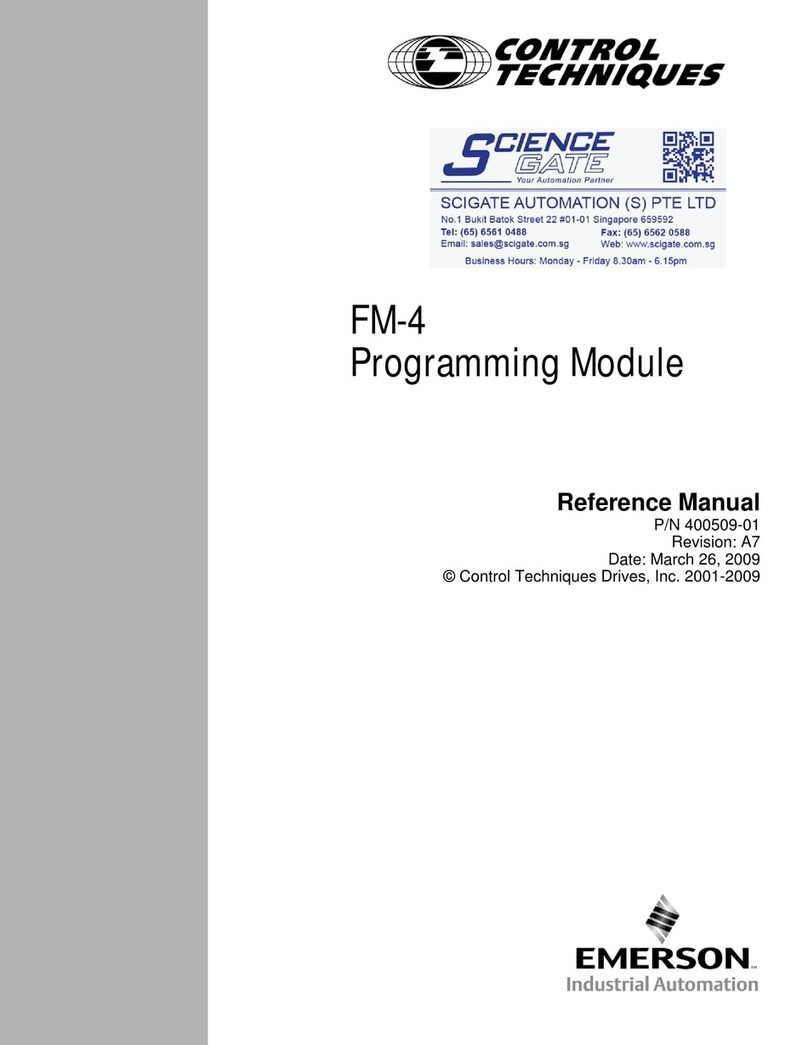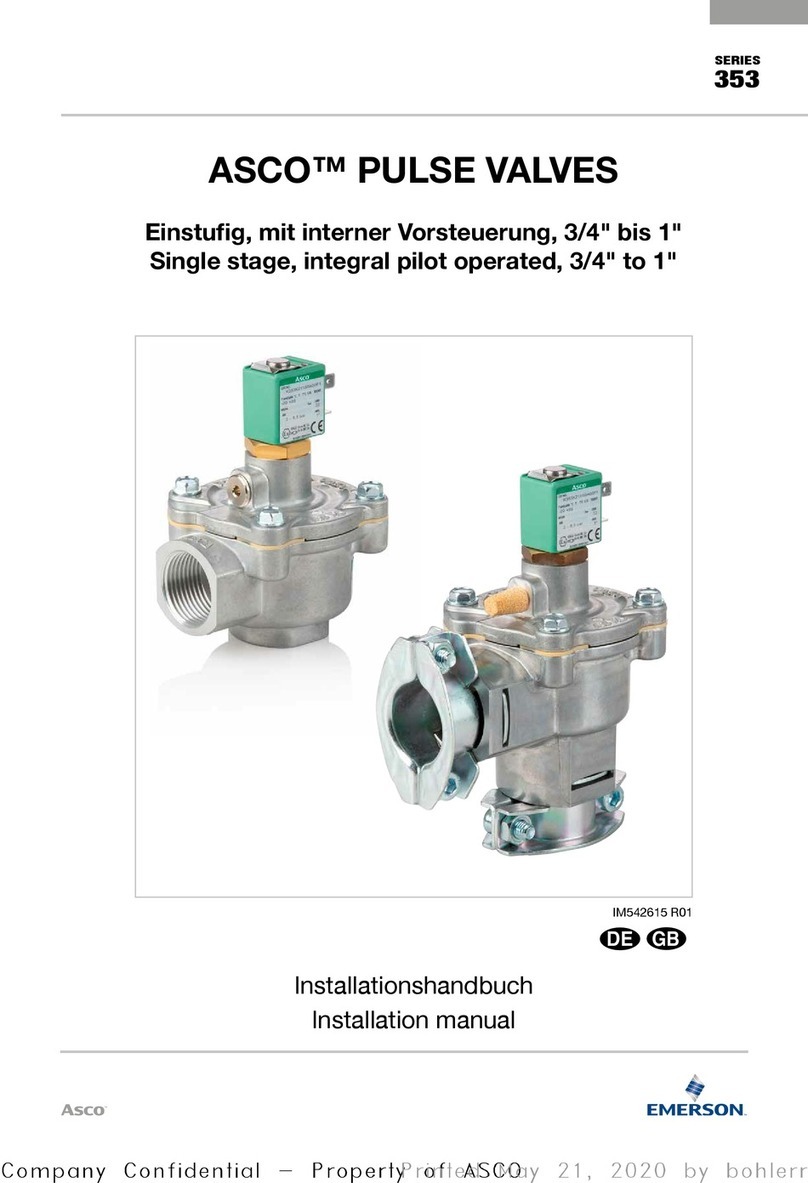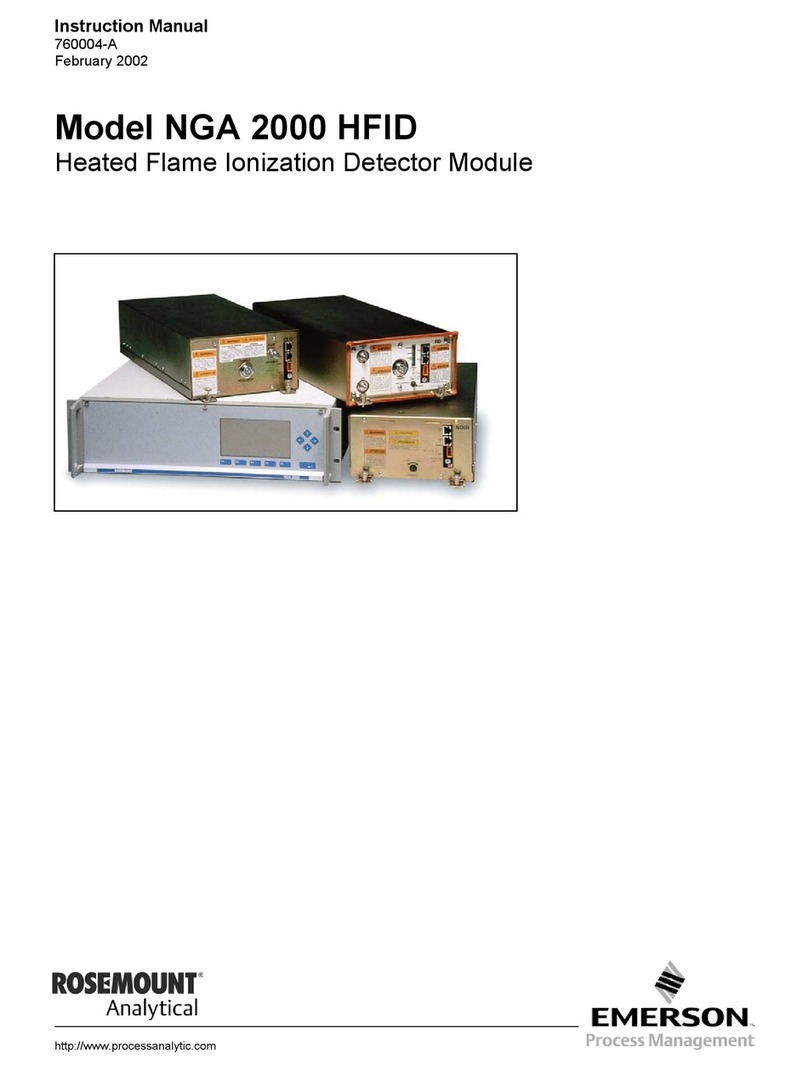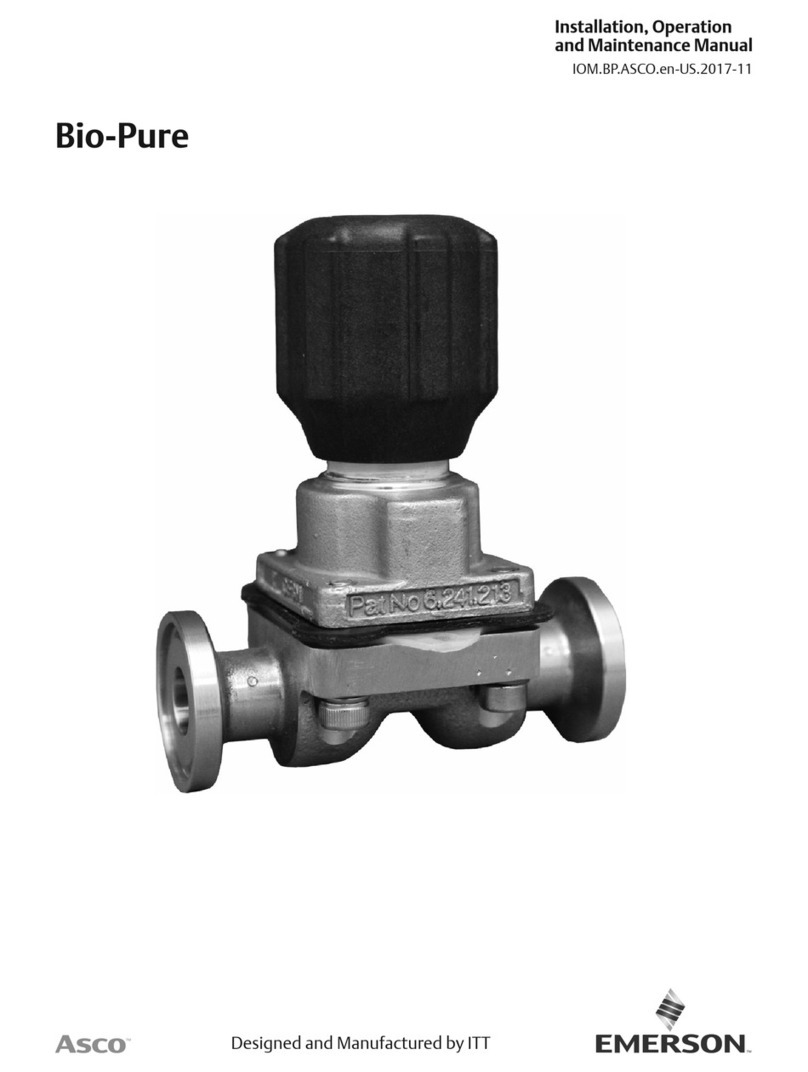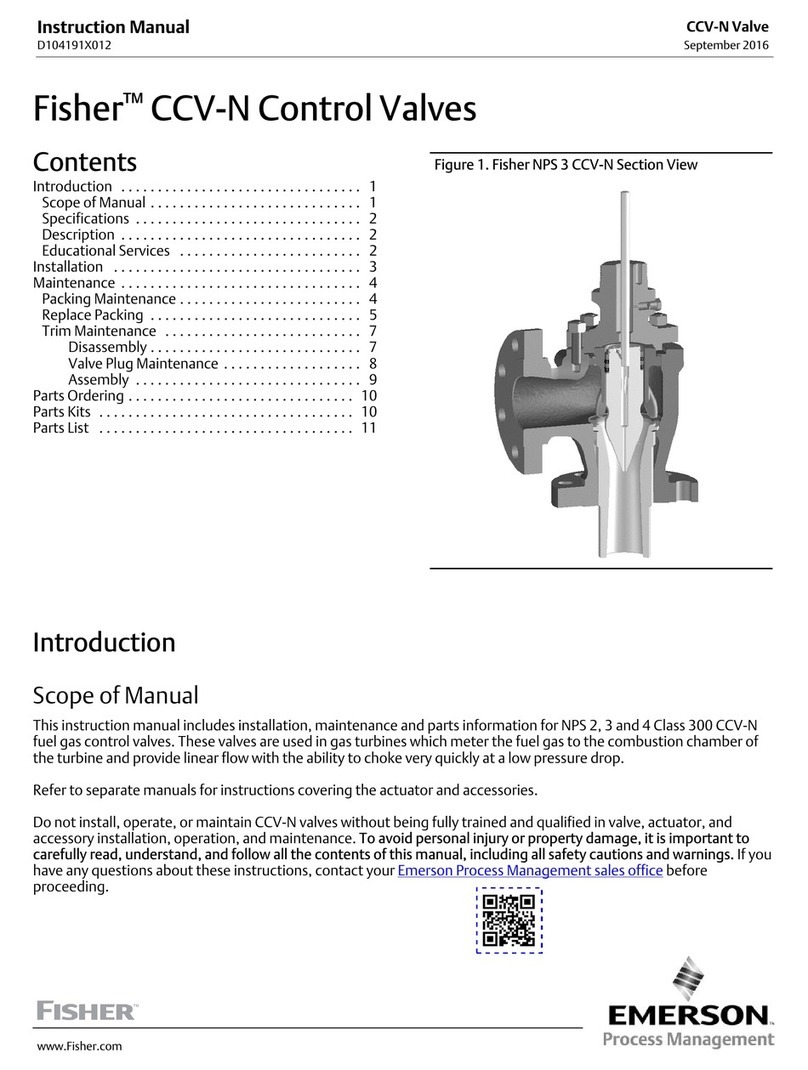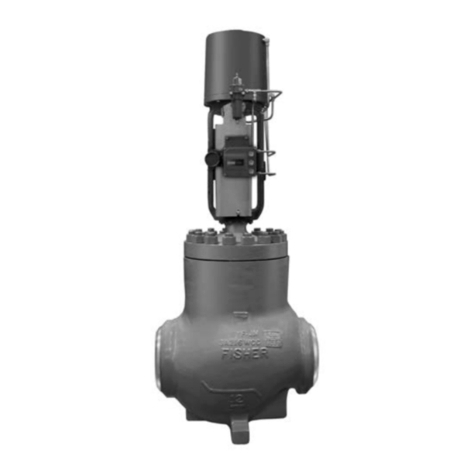
Types C471, C477 and C486
6
EXPLOSION HAZARD
!
Restrictions incorporated in the
discharge system of a bobtail truck
or transport or of a stationary tank
(due to pumps, pipe and hose length
and dimensions, branching, elbows,
reductions in pipe diameter or a number
of other in-line valves or ttings),
low operating pressure as a result
of ambient temperature or a partially
closed valve downstream from the
integral excess ow valve, can restrict
the rate of ow through the internal
valve below the level necessary to
actuate the integral excess ow valve.
Therefore, DO NOT USE the excess ow
function of the internal valve for the
purpose of providing protection against
the discharge of hazardous materials
in the event of a rupture of hose or
piping at a point in the discharge
system downstream from the rst valve,
pump or tting downstream of the
internal valve.
The internal valve is designed with an
internal bleed feature for equalization of
pressure. After the integral excess ow
valve closes, the leakage through the
bleed must be controlled or a hazard can
be created. For this reason the operator
must be familiar with the closure
controls for the internal valve and must
close the internal valve immediately after
the integral excess ow valve closes.
Failure to follow this warning could result
in serious personal injury or property
damage from a re or explosion.
DOT Passive Shutdown Equipment Requirement—
DOT regulations 49CFR§173.315(n)(2) require certain
cargo tanks transporting propane, anhydrous ammonia
and other liqueed compressed gases to be equipped
with passive emergency discharge control equipment
that will automatically shutoff the ow of product
without human intervention within 20 seconds of an
unintentional release caused by complete separation of
a delivery hose. The design for each passive shutdown
system must be certied by a Design Certifying Engineer
(DCE) and all components of the discharge system that
are integral to the design must be included in the DCE
certication. The DCE certication must consider any
specications of the original component manufacturer.
In the case of downstream ruptures in hose or piping,
a variety of operating conditions routinely encountered
during an unloading operation restrict the rate of ow
through the integral excess ow valve and make such
a valve unsuitable to serve as the means of passive
shutdown required under 49CFR§173.315(n)(2).
Such variables include restrictions incorporated
in the discharge system (due to pumps, pipe and
hose length and dimensions, branching, elbows,
reductions in pipe diameter or a number of other
in-line valves or ttings), low operating pressure as
a result of ambient temperature or a partially closed
valve downstream from the excess ow valve. Due
to the variety of conditions, in the case of a hose
separation, that can restrict the rate of ow below the
level necessary to activate the excess ow valve, the
integral excess ow function of Fisher™ “C” Series
internal valves or “F” Series excess ow valves cannot
be used to satisfy the passive shutdown equipment
requirement under/in 49CFR§173.315(n)(2). Also, a
Design Certifying Engineer cannot include the integral
excess ow valve of a Fisher “C” Series internal valve
or “F” Series excess ow valve as a component of
the discharge system in any DCE certication under
49CFR§173.315(n)(2).
EXPLOSION HAZARD
!
DO NOT USE the excess ow function
incorporated into Fisher “C” Series
internal valves or “F” Series excess
ow valves to satisfy the passive
shutdown equipment requirement
in 49CFR§173.315(n)(2). DO NOT
include the excess ow function
incorporated into Fisher “C” Series
internal valves or “F” Series excess
ow valves in a DCE certication
under 49CFR§173.315(n)(2). The cargo
tank manufacturer must install some
other equipment that satises the
requirement for passive shutdown
capability under 49CFR§173.315(n)(2).
Failure to follow this warning
could result in serious personal
injury or property damage from a
re or explosion in the event of an
unintentional release of product during
an unloading operation.
